Book Summaries
France
Prussia/Germany
Austria/Italy
Russia
Overall Europe
Great War
France
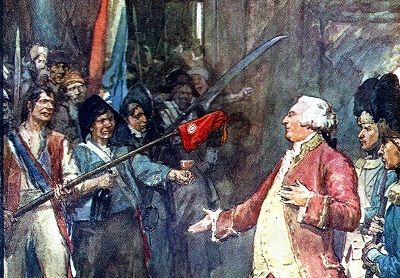
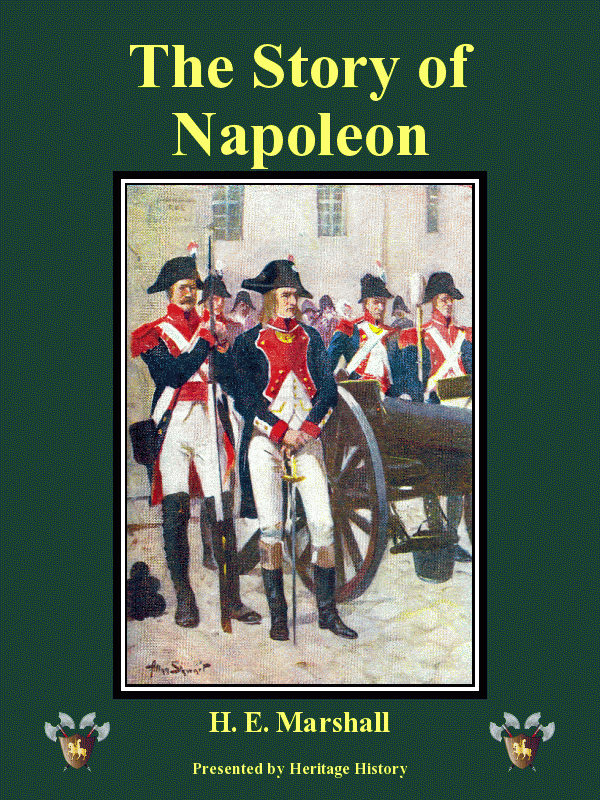 |
Story of Napoleon by H. E. Marshall
This book tells the story of Napoleon, one of the most outstanding characters
in European history, at a level appropriate for grammar and middle school
students. Napoleon was a young Corsican officer at the time of the French Revolution.
He distinguished himself first in the French Revolutionary Wars (1792-1798) and by 1804
had established himself as the undisputed head of France and crowned himself emperor.
During the following decade he brought all of Europe under his power before losing
everything after his disastrous march on Russia. He remains one of the most controversial
characters of history. [35 sheets]
|
 |
Belgian Twins by L. F. Perkins
As the Germans invade Belgium, 9 year old twins Jan and Marie experience the horrors of the
First World War. Separated from their mother and father after a bombing raid, the children meet
with much danger as they search for their missing parents. In the course of their search they
assist a family of refugees, and are themselves sent as refugees out of the country before being
reunited with their family. [49 sheets]
|
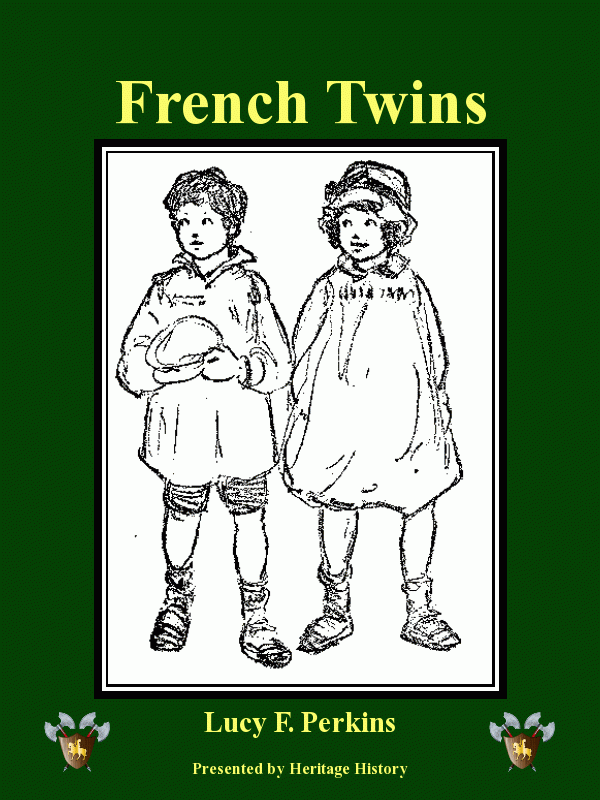 |
French Twins by L. F. Perkins
In the threatening atmosphere of the first world war, 9 year-old twins Pierre and Pierette brave
the dangers of the German invasion in their home town of Rheims. In the midst of daily bombing from
the Germans, they carry on their daily activities to the best of their abilities. When the danger
grows too great, they flee with their parents to a safer village where they meet with American soldiers.
[51 sheets]
|
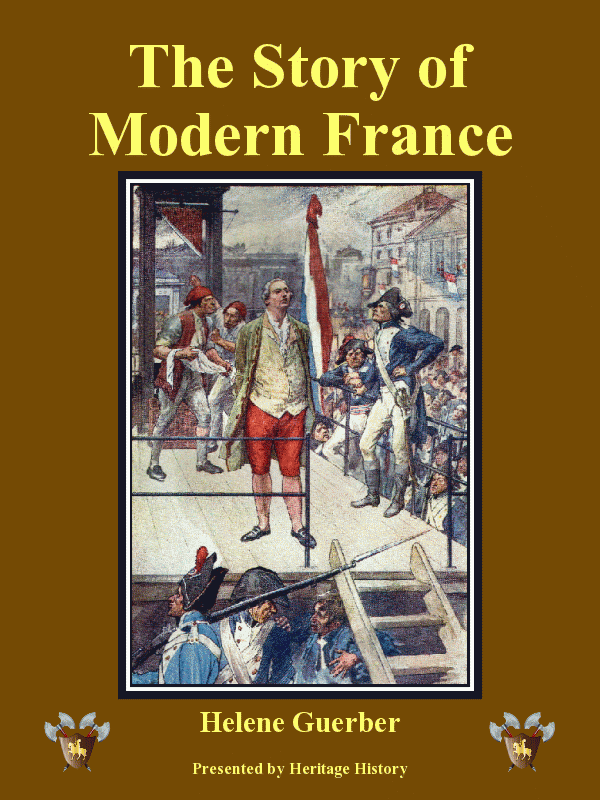 |
Story of Modern France by H. A. Guerber
This comprehensive history of France from the years leading up to the French
Revolution to the years immediately before World War I gives an excellent overview
of one of the most dramatic and turbulent centuries in European history. Beginning
with the corrupt and extravagant reign of Louis XV, much of the book focuses on
the turbulent period from the events leading up to the French Revolution to
Napoleon's defeat at Waterloo. The final third of the book covers the Restoration,
the second Empire under Napoleon III, and the Third Republic formed after the
devastating Franco-Prussian war. [142 sheets]
|
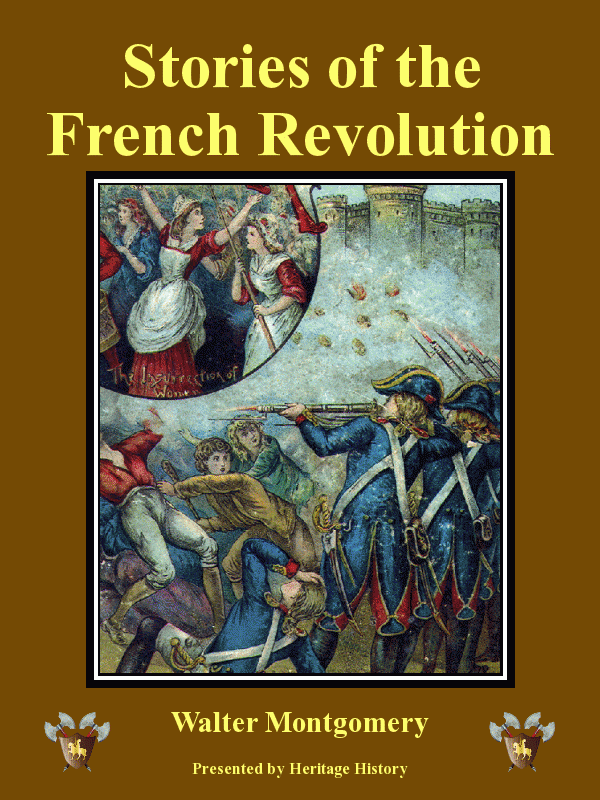 |
Stories of the French Revolution by Walter Montgomery
This beautifully illustrated book, published on the anniversary of the reign
of Terror in France, is an excellent middle school introduction to the drama
of the French Revolution. The story is told in enough depth to be of abiding
interest, but focus is mostly on the dramatic events of the era, without
too much reflection on the confusing politics of the situation. [112 sheets]
|
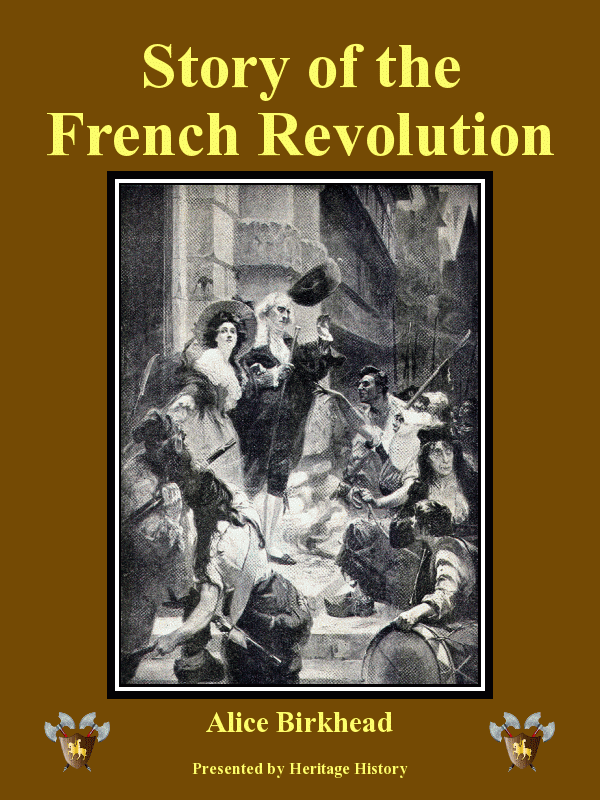 |
Story of the French Revolution by Alice Birkhead
This book recounts the story of the French Revolution from a point of view that is generally
sympathetic to the aims of the Revolution. Fascinating stories of the revolution detailed in this
volume include the September massacres, the reign of terror, and insights into the lives of Rousseau,
Mirabeau, Madame Roland, Robespierre, Charlotte Corday, Marie Antoinette, and the unfortunate Dauphin,
Louis XVII. The story ends with the rise of Napoleon. [112 sheets]
|
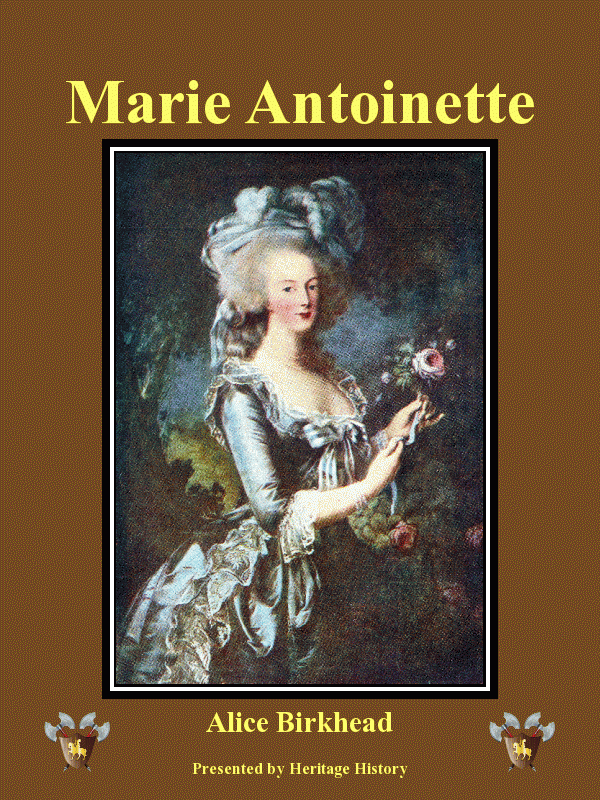 |
Marie Antoinette by Alice Birkhead
Marie Antoinette was one of the most tragic figures of the French revolution. This biography traces
her life from her frivolous youth through the terrors and trials of the revolution, and finally to her
stoic and courageous death on the scaffold. [58 sheets]
|
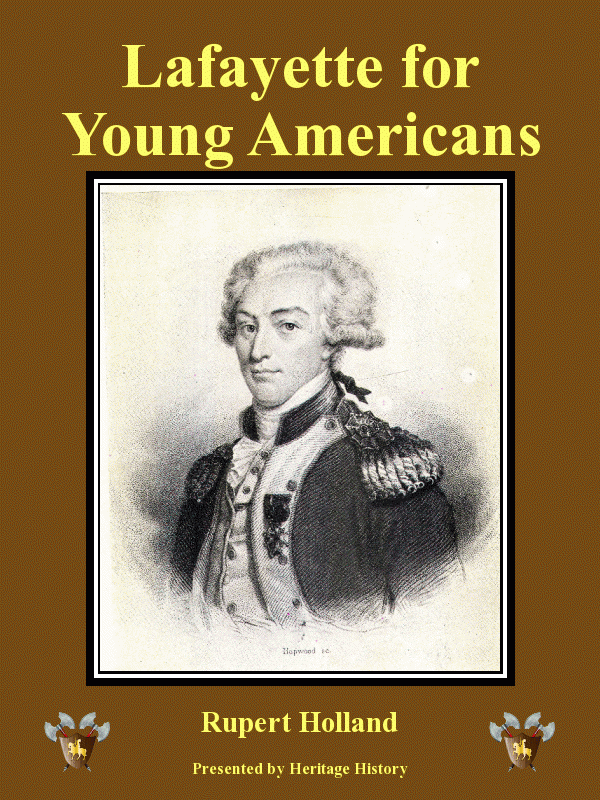 |
Lafayette for Young Americans by Rupert Holland
The book follows the fascinating career of the Marquis de Lafayette from his youth in France through
the years of his heroic service to Washington during the Revolutionary Wars to his ill-fated service
of the Revolutionary cause in France. The story of Lafayette's life provides a fascinating juxtaposition
between the successful and laudatory American revolution, and the far more blood-thirsty French revolution.
The author does an excellent job of presenting complicated political events in terms comprehensible to
middle school aged students. [103 sheets]
|
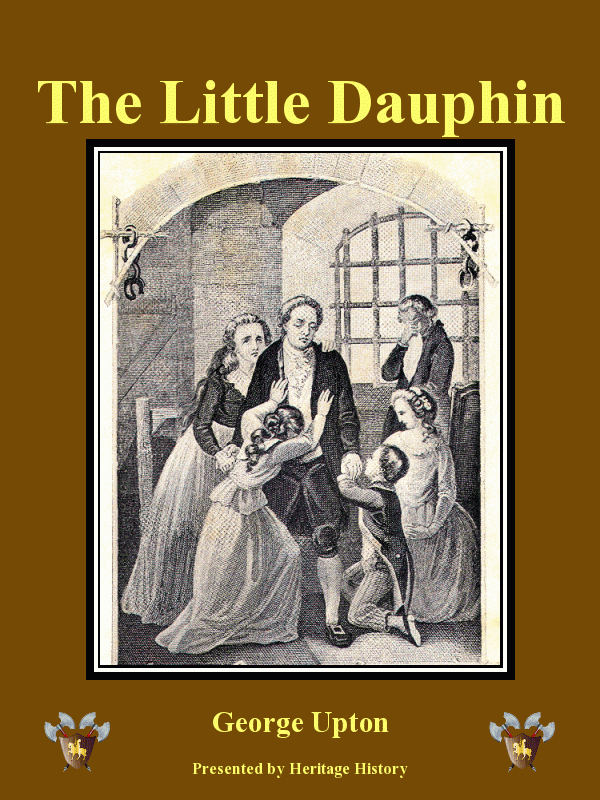 |
The Little Dauphin by George P. Upton
The protagonist of this book is Louis XVII, son of Louis XVI and Marie Antoinette, both of whom died
during the reign of terror. Although legally king of France after the execution of his father, the
seven-year-old boy was taken from his family and kept prisoner for three years, during which time he
was tortured, beaten and abused. His story, told with as much restraint as possible, provides a
dramatic and pathetic insight into the cruelties and viciousness of the French revolution. [46 sheets]
|
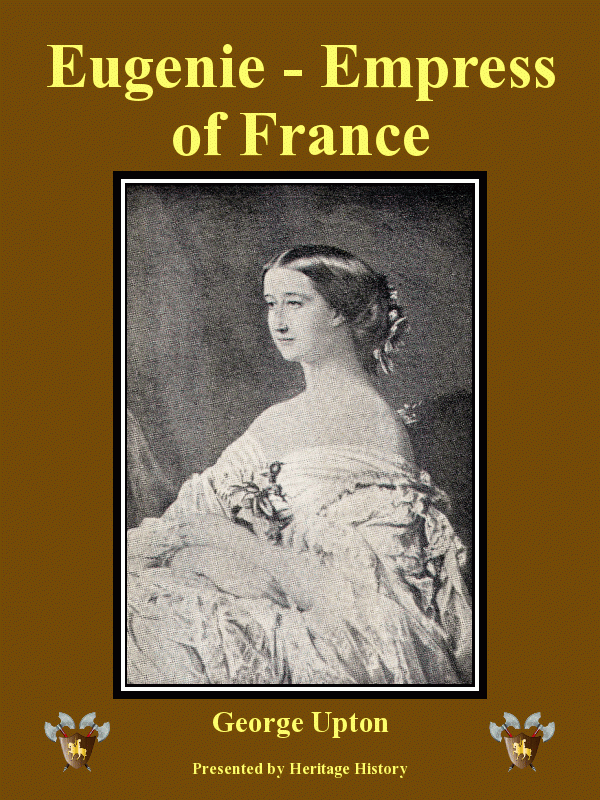 |
Eugenie - Empress of France by George P. Upton
The story of Napoleon III Emperor of France from 1852 to 1870 is well told through the life story
of Eugenie, his Empress, whom he married for love, rather than political connections. Although their
20 year reign included many triumphs, it ended disastrously as a result the Franco-Prussian War.
Eugenie outlived her husband by nearly 50 years and saw France through a difficult and tumultuous
half-century. [50 sheets]
|
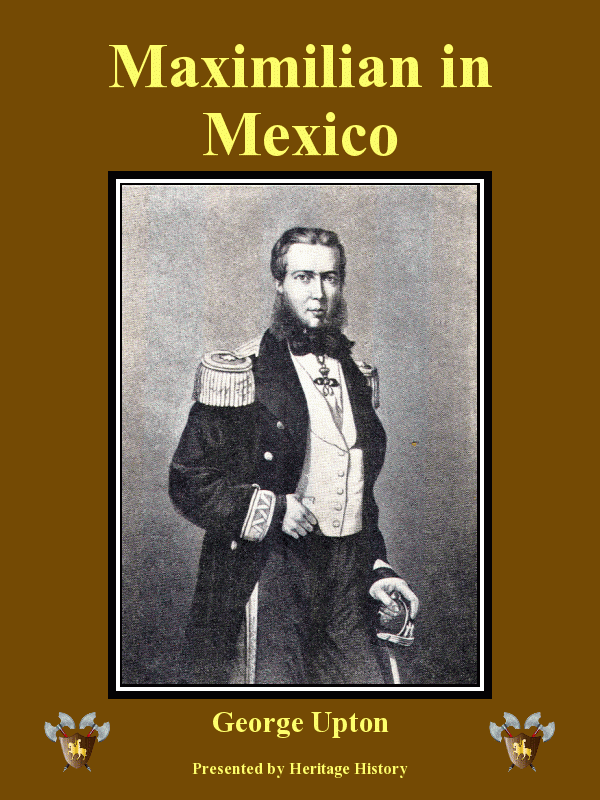 |
Maximilian in Mexico by George P. Upton
The tragic story of Maximilian of Mexico is one of political opportunism and rank treachery.
Maximilian and his lovely wife Carlotta, who were pampered European royalty, were in no way
prepared for the back-stabbing treachery from both Mexicans and Europeans which confronted
them when they accepted the crown of the Mexico. [42 sheets]
|
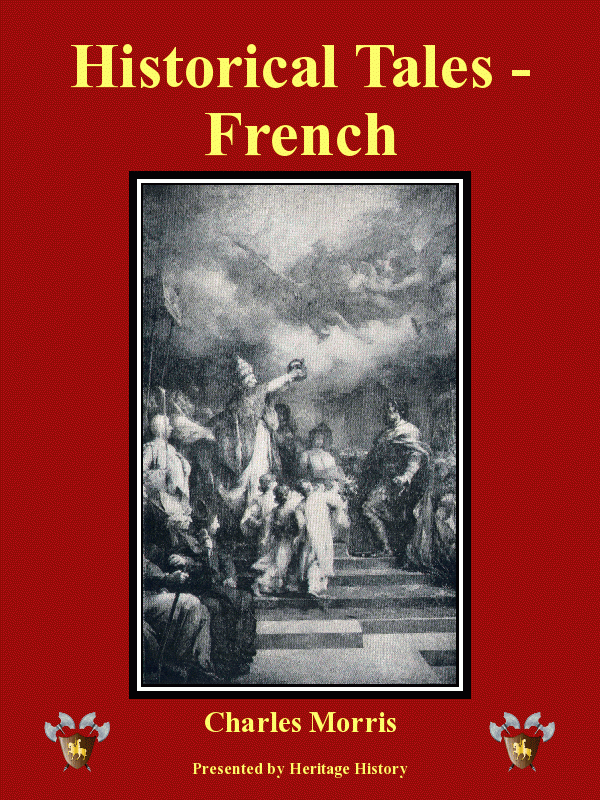 |
Historical Tales - French by Charles Morris
Some of the most romantic stories of France, beginning with the
Visigoth repulsion of the Huns at Chalons, and ending with the Franco Prussian War,
are recounted by an outstanding storyteller. This collection of entertaining stories
was written especially to appeal to young adults. Familiar characters such as
Charlemagne and Joan of Arc are introduced, but so are lesser known characters
such as Bayard, Charles the Bold, and the Duke of Bourbon. [136 sheets]
|
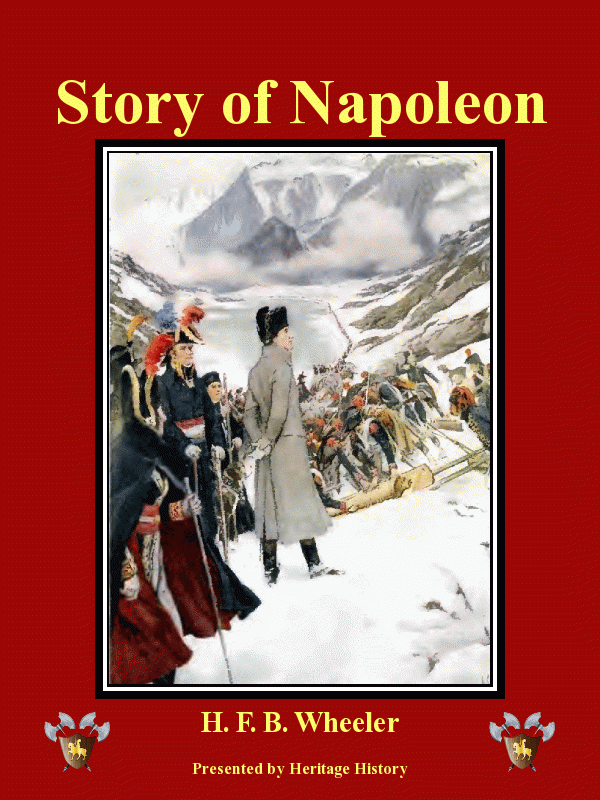 |
Story of Napoleon by H. F. B. Wheeler
Napoleon is one of the most fascinating characters of all time, not only because of his tremendous
military achievements but because of his many strategic insights into human nature, government, and
geopolitics. He rocked all of Europe not only with his armies but with his visions of a secular and
"enlightened" government. This story of his life recounts his military achievements in detail and
gives some insight into his motivations and character. [141 sheets]
|
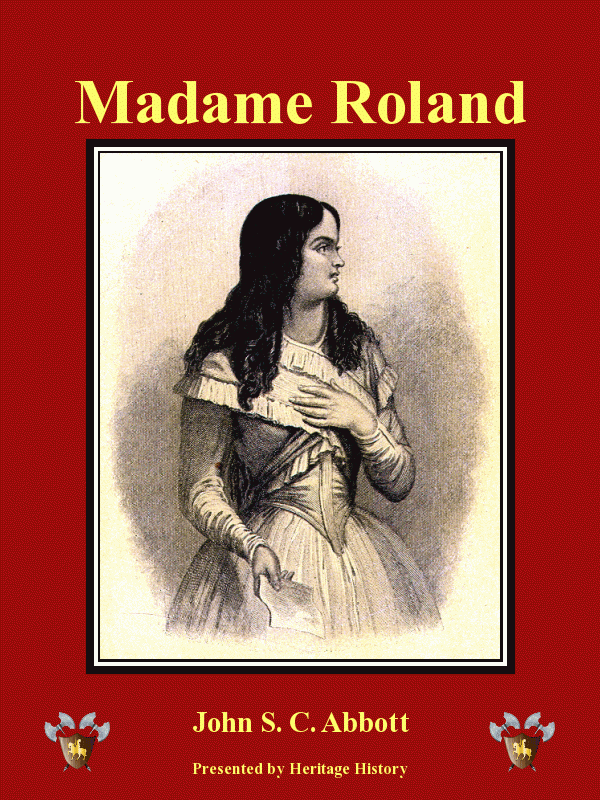 |
Madame Roland by J. S. C. Abbott
Madame Roland was one of the most fascinating characters of the French Revolution. Born into
relative poverty, Marie Roland was a brilliant intellectual who married into a noble family.
Her husband was a minister of the Revolutionary government during the early years of the French
Revolution, and she became secretary and behind-the-scenes mastermind of the Girondist party.
Although the Girondists thoroughly supported the revolution, their criticism of the outrages of
some of the lawless revolutionaries earned them the enmity of the increasingly radical Jacobin
party, and Marie Roland died on the scaffold during the reign of terror. [86 sheets]
|
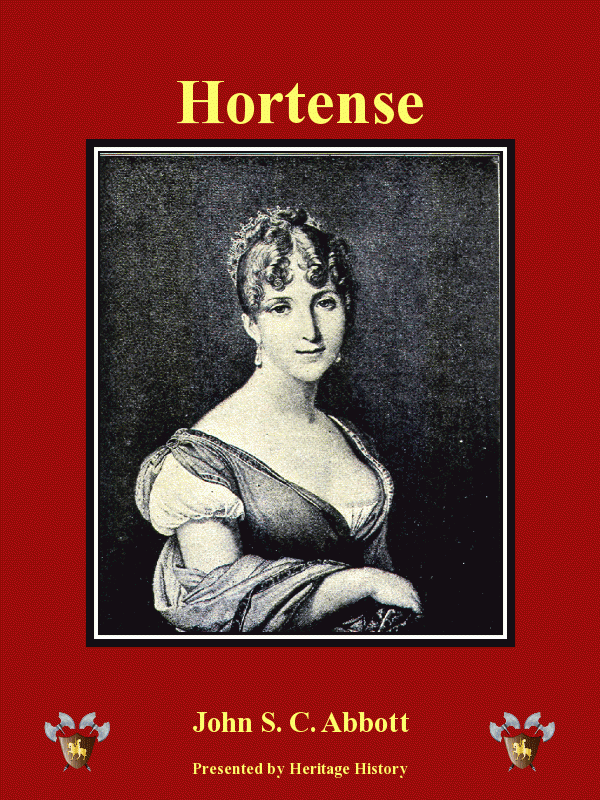 |
Hortense by J. S. C. Abbott
Hortense de Beauharnais was the daughter of Josephine, the sister-in-law of Napoleon and the mother
of Napoleon III. Her life story, therefore spans the era from the French Revolution, throughout the
Napoleonic Wars, and the tumultuous years of the first French Republic, and provides insight into both
the political developments of the age, and also into the domestic relationships within the extended
Bonaparte family. [114 sheets]
|
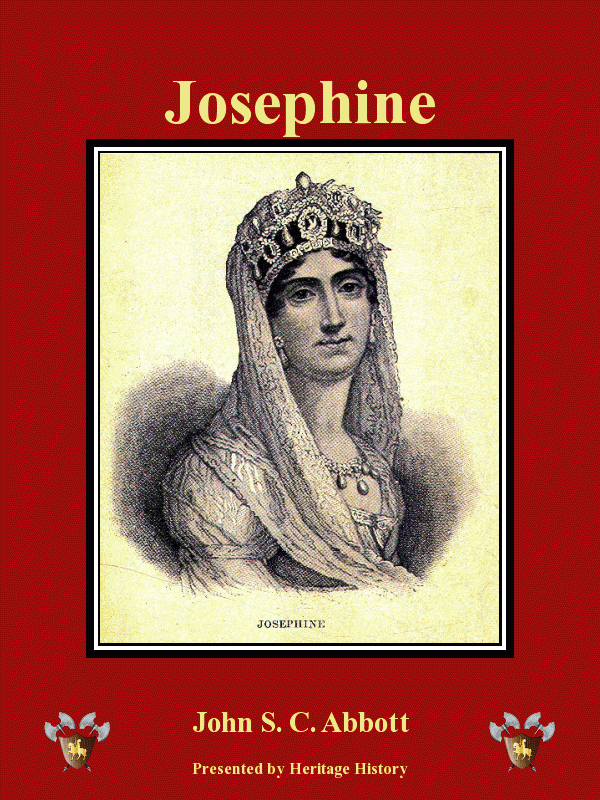 |
Josephine by J. S. C. Abbott
Josephine was a French aristocrat who was widowed by the French Revolution, but
her fortunes turned once more when she married an ambitious young officer in the
Revolutionary army, Napoleon Bonaparte. The story of the rise of Napoleon from
obscurity to the emperor of the French and the master of Europe is told with great
insight from the point of view of his closest advisor and confidant. [94 sheets]
|
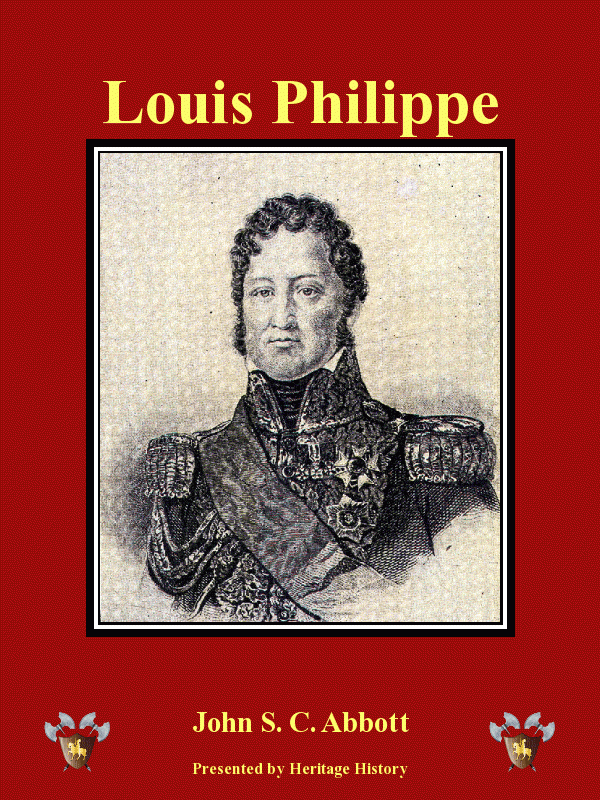 |
Louis Philippe by J. S. C. Abbott
Louis Philippe was the son of the Duke of Orleans, the wealthy and liberal aristocrat
who joined his fortunes with the commoners during the French Revolution only to lose
his head during the Reign of Terror. His son spent much of the next twenty years in
exile and, after his cousin Charles X was deposed during the Revolution of 1830, was
crowned King of France. Louis Philippe ruled as a liberal constitutional monarch and
tried to help modernize the country, but even he could not satisfy the republican
ambitions of the French radicals. He was deposed in 1848. [113 sheets]
|
Prussia and Germany
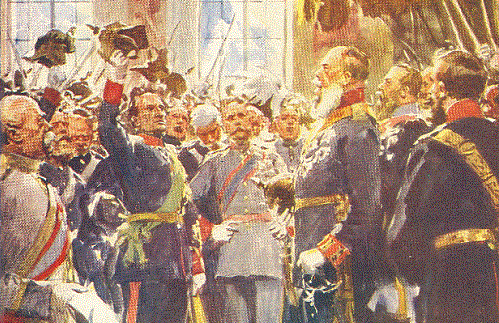
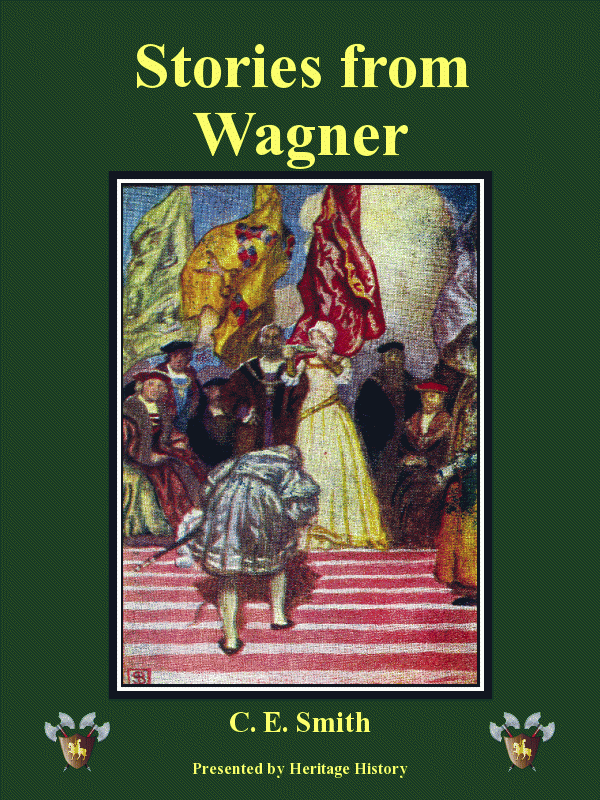 |
Stories from Wagner by C. E. Smith
The story of three of Wagner's most famous operas are beautifully retold in a simple and romantic
fashion that is accessible even to grammar school age children. There are three stories altogether.
Lohengrin is about a sorceress who casts a spell on a prince of Belgium in the days of Henry the Fowler.
The Mastersingers of Nuremberg is a romance about a singer who wins the heart of a Nuremberg maiden,
and the Flying Dutchman is about a merchant under the spell of the seas. [37 sheets]
|
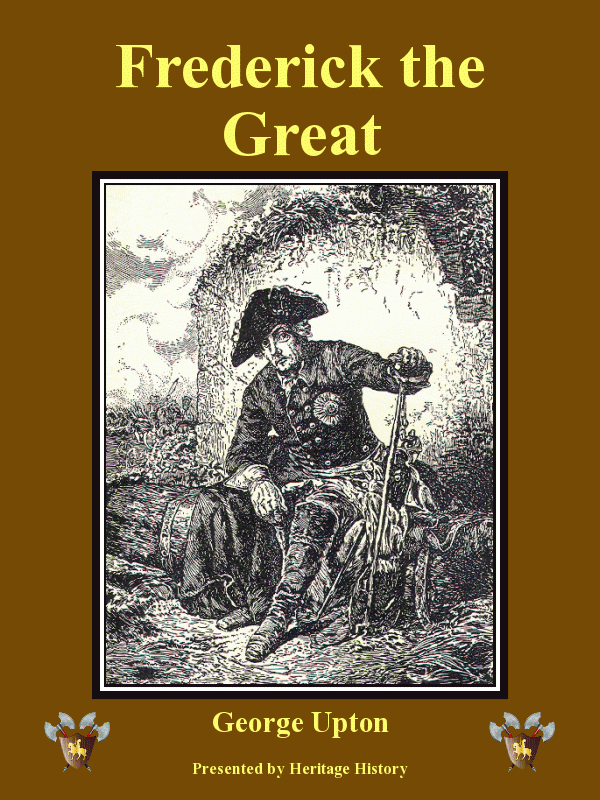 |
Frederick the Great by George P. Upton
This book focuses mainly on the event-filled Seven Years War, rather than the full life of
Frederick the Great. It is an excellent companion book to Theresa Maria of Austria, which
covers many of the same events from the Austrian, rather than the Prussian point of view.
[50 sheets]
|
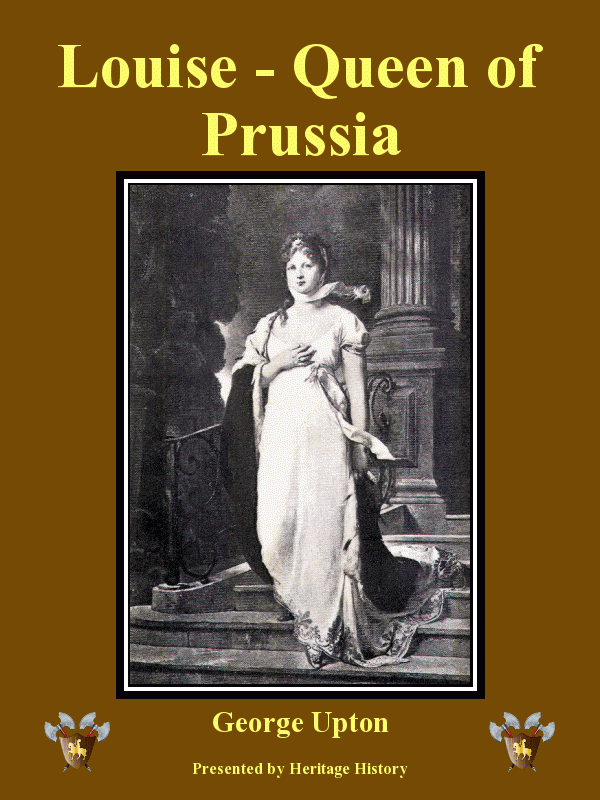 |
Louise - Queen of Prussia by George P. Upton
Louise, Queen of Prussia is one of the most heroic figures of the Napoleonic war era.
She rallied the country to resist Napoleon and did everything in her power to maintain
Prussian rights under the tyrannical regime of Napoleon. Her son William I became the
first Emperor of Germany. [39 sheets]
|
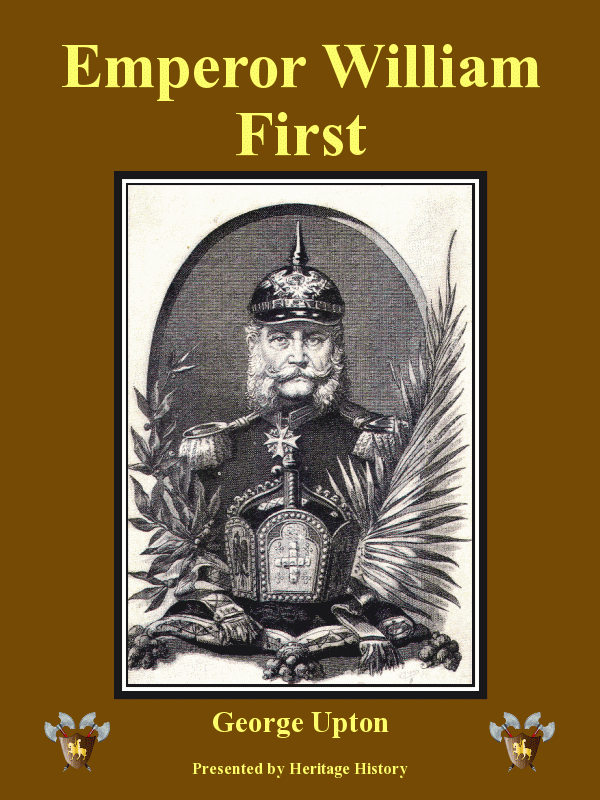 |
Emperor William First by George P. Upton
This biography of William the First, the first Kaiser of Germany, was written before the
First World War, and in retrospect appears fawning toward its subject. At the time it was
written however, Prussia was greatly admired throughout much of the west for its progressive,
secular achievements, and the Emperor was highly regarded. [40 sheets]
|
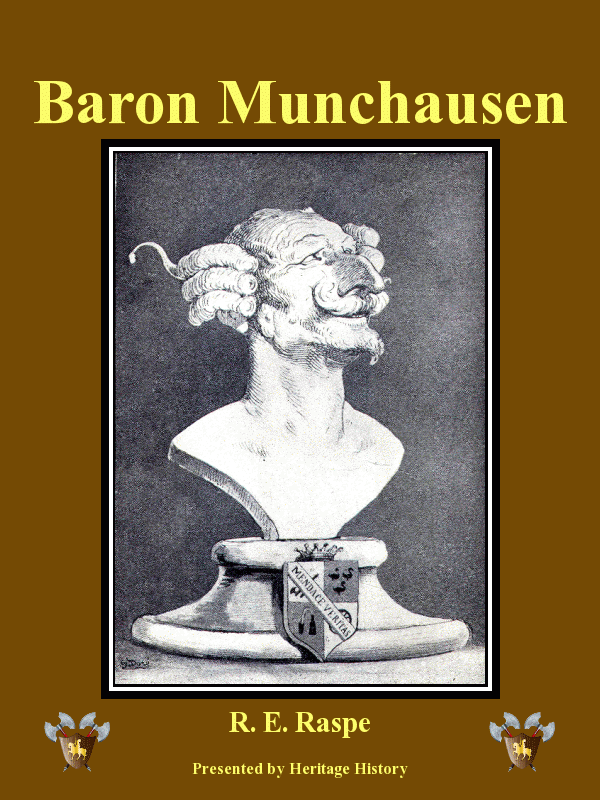 |
Baron Munchausen by R. E. Raspe
Baron Munchenhausen is notable as one of the most notorious liars of the 19th century and this
book recounts his highly unlikely stories of adventure and escapes. The Baron himself was a
German soldier, who fought in the Russian-Turkish Wars, but his only claim to fame was his
notorious propensity for exaggeration and outright fabrication in recounting his exploits therein.
He is credited with coining the term 'bootstrap', by way of explaining how he escaped from a swamp
(by pulling himself out by his own bootstrap). [56 sheets]
|
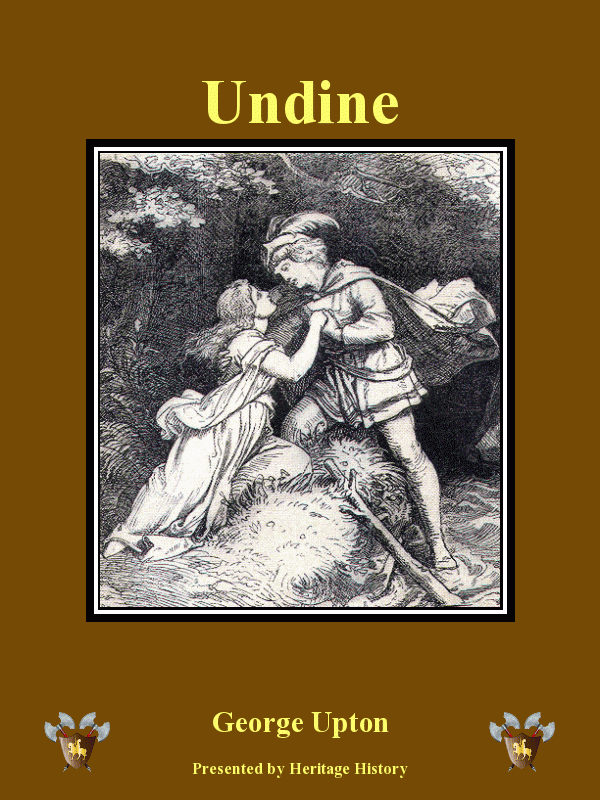 |
Undine by George P. Upton
This famous German romance is based on 18th century story of a water spirit
who marries a human in order become mortal. It is full of mischief, treachery,
and drama. It was made into a very popular Opera by Hoffman and was emblematic
of the 19th century rebirth of German romantic culture. [46 sheets]
|
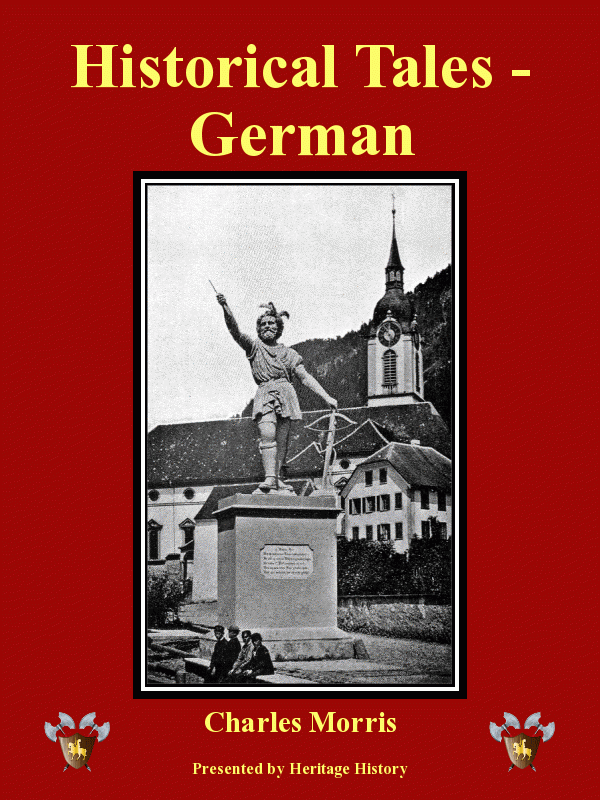 |
Historical Tales - German by Charles Morris
This selection of stories from German history span from the era of the Roman
Empire to the foundation of the German republic in the late 19th century.
Instead of a comprehensive history, the author has rewritten some of the
most entertaining episode in a manner especially interesting to young adults.
Familiar characters such as Frederick the Great, and Luther are introduced,
but so are more obscure characters such as Wittekind, Ziska, and Wallenstein.
[134 sheets]
|
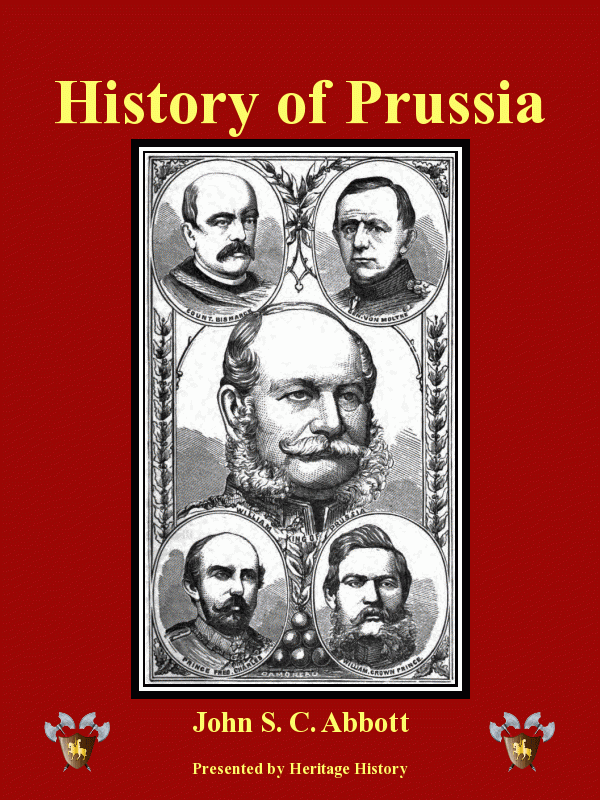 |
History of Prussia by J. S. C. Abbott
The book provides a fascinating account of the rise of the Prussian Empire,
written while Prussia was at the height of her influence. The first section
examines the early years of Prussia, from its rise from a minor duchy to a
major European power under Frederick the Great, to its struggles with France
during the Napoleonic era. Most of the book however, is dedicated to the
formation of the German Empire under Bismarck, a series of events which
made Prussia the predominant power in Europe. It ends with a detailed
description of the Franco-Prussian war and the calamity of the Paris Commune,
which occurred only a year before the book was published. [156 sheets]
|
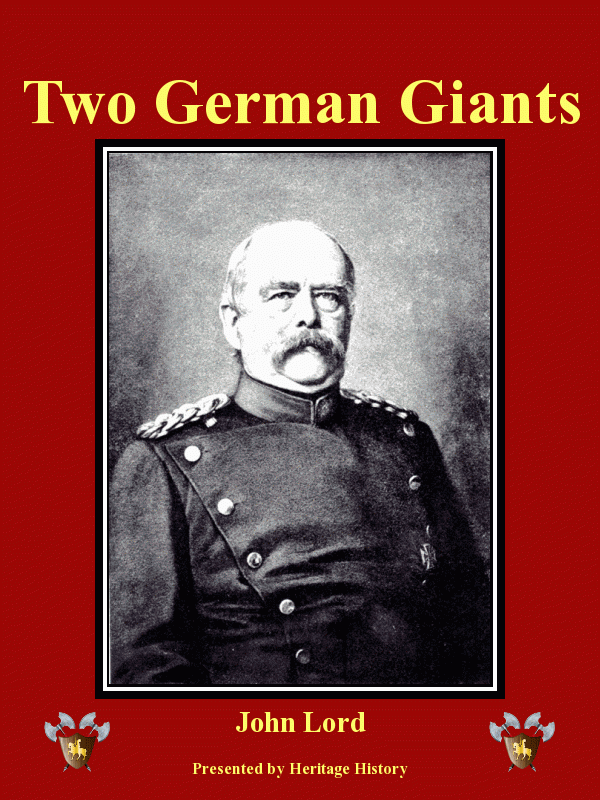 |
Two German Giants—Frederick and Bismarck by John Lord
These portraits of Frederick the Great and Otto Von Bismarck, the two
great architects of the Prussian empire, were written by a Christian
who was able to identify the spiritual abyss at the heart of Prussian
nationalism. He cannot help but admire the courage and brilliance of
these leaders while remaining skeptical that German pragmatism,
so admired by western leaders of the 19th century, was at heart
atheistic. A fawning essay, written a contemporary admirer of
Bismarck, and a well-known speech Bismarck gave to the Reichstag
provide additional perspectives. [156 sheets]
|
 |
Bismarck and the German Empire by J. W. Headlam
This biography of Bismarck focuses mainly on his life as a brilliant
statesmen who laid the foundations of the German empire. Bismarck is
best known for his keen judgment regarding foreign relations. By cleverly
manipulating foreign governments, he was able to set his rivals against
each other, prevent alliances that would stand against Prussia, and provoke his enemies to undertake foolish campaigns. He oversaw the rise of the German nation to the foremost position in Europe, and laid the foundation for German military dominance in Europe. [189 sheets]
|
Austria and Italy
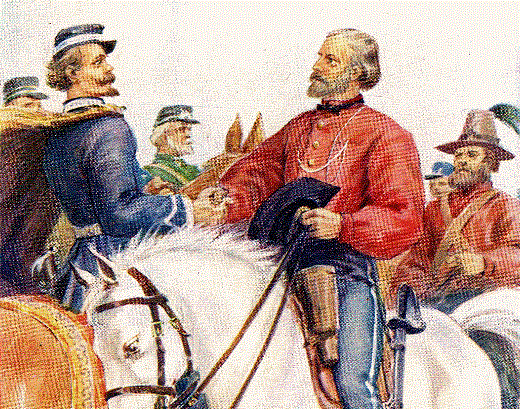
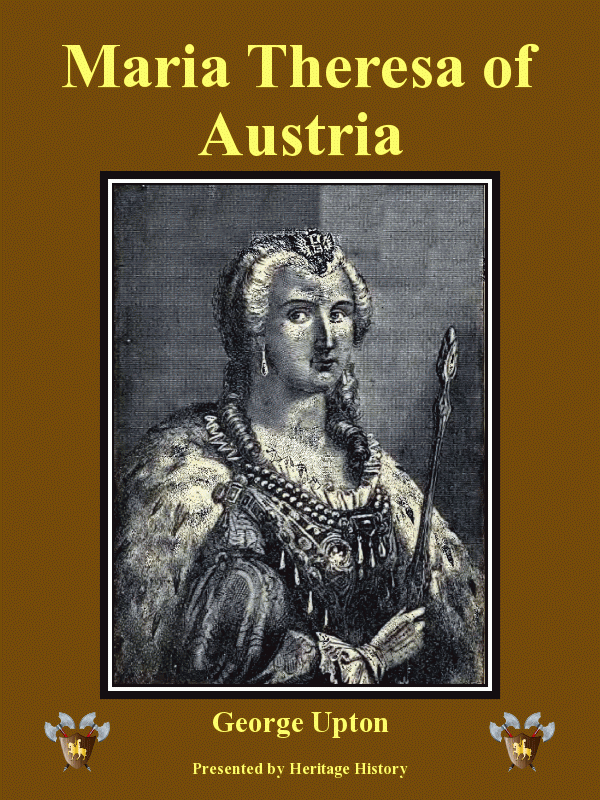 |
Maria Theresa of Austria by George P. Upton
Maria Theresa was Archduchess of Austria for forty years, spanning much of the 18th century.
The Austrian Empire was large and diverse, and Austria was surrounded on all sides by dangerous
foes, most significantly Frederick the Great of Prussia who spent much of his career expanding
the borders of Prussia at the expense of Austria. This book draws a sympathetic portrait of one
of the most interesting and powerful women in European history. [43 sheets]
|
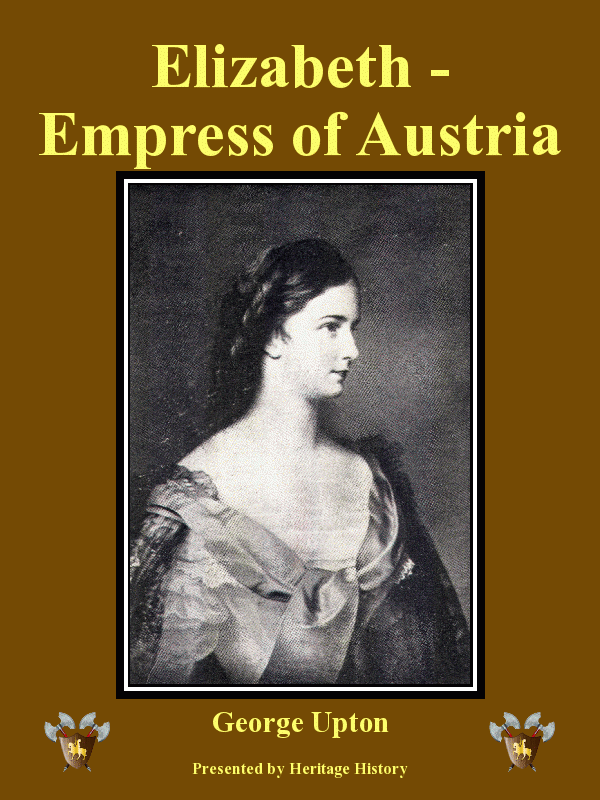 |
Elizabeth - Empress of Austria by George P. Upton
Elizabeth of Austria was an romantic heroine of the 19th century rather than an important
political personage. Beautiful and well educated, she distained court life, and spent much
of her life traveling. Although graced with every advantage, her personal life was filled
with disappointments and tragedies including the suicide of her son, the crown prince, and
her own tragic assassination. [48 sheets]
|
 |
Joseph Haydn by George P. Upton
Haydn was one of the most important and original composers of the 18th century. He was
also a close friend of Mozart and a teacher of Beethoven. He lived an exemplary life and
was one of the most popular composers in all of Europe. [57 sheets]
|
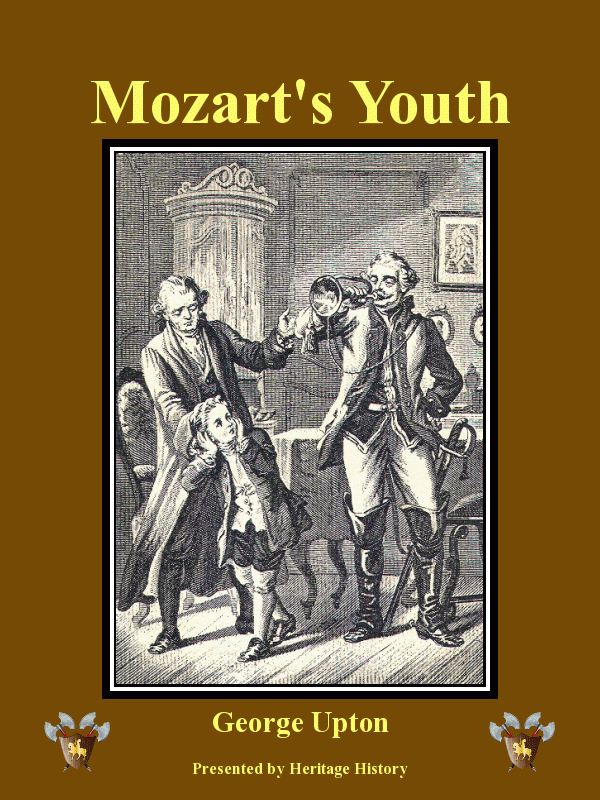 |
Mozart's Youth by George P. Upton
This story tells only of the youth of Mozart, who already at fifteen was considered a
genius and protégé. The emphasis is on his early experiences and character formation
rather than his short but brilliant career. [36 sheets]
|
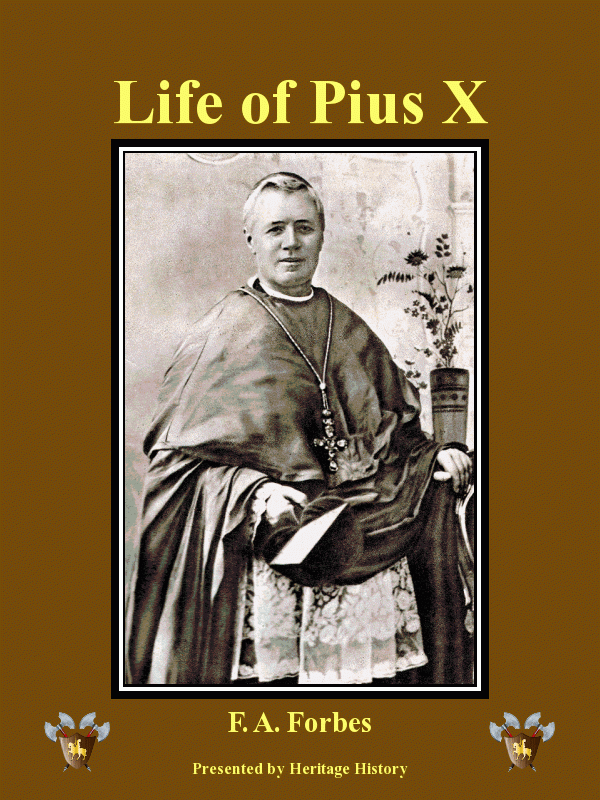 |
Life of Pius X by F.A. Forbes
Pius the tenth, born Giuseppe Sarto in a small town in Italy, was pope during the early
years of the 20th century. He was a staunch supporter of traditional Catholic dogma against
the surging tide of secular modernism, and his personal piety was a great inspiration to
those around him. [75 sheets]
|
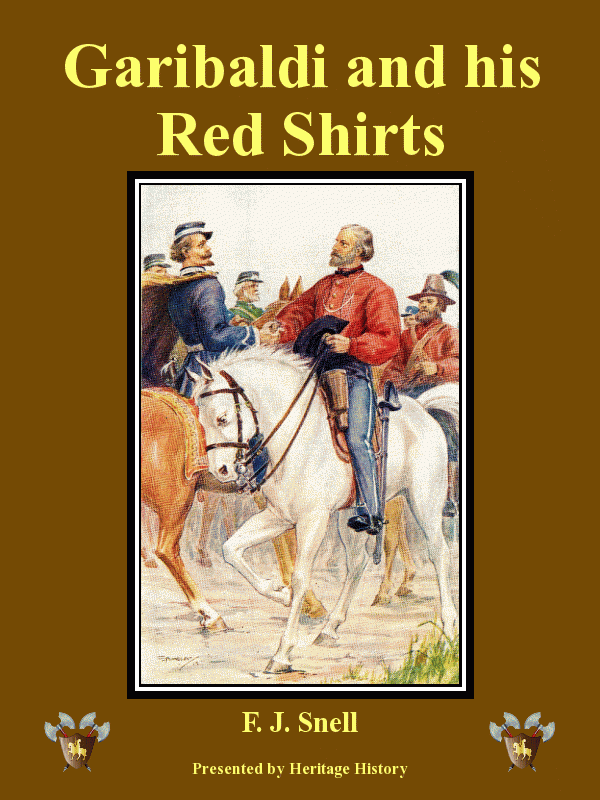 |
Garibaldi and his Red Shirts by F. J. Snell
Garibaldi is one of the most interesting of the characters involved in the wars of
Italian Unification. He was an extreme radical and violently anti-Catholic, but
idealistic and selfless in his efforts; always willing to risk his own life and
property while accepting no reward or position for his services. He was a warrior
rather than a statesman, and this biography follows his military career in detail.
The politics involved in the Unification of Italy were exceedingly complicated
so the episodes of treachery, shifting alliances, secret missions, and geo-political
struggles may be difficult to follow without a previous introduction to the period,
but his military campaigns are of great interest themselves.
[75 sheets]
|
Russia
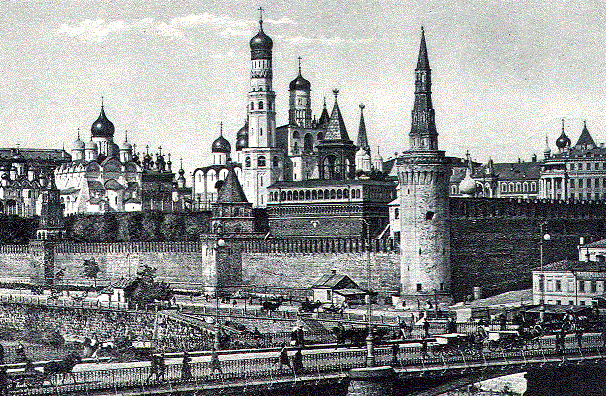
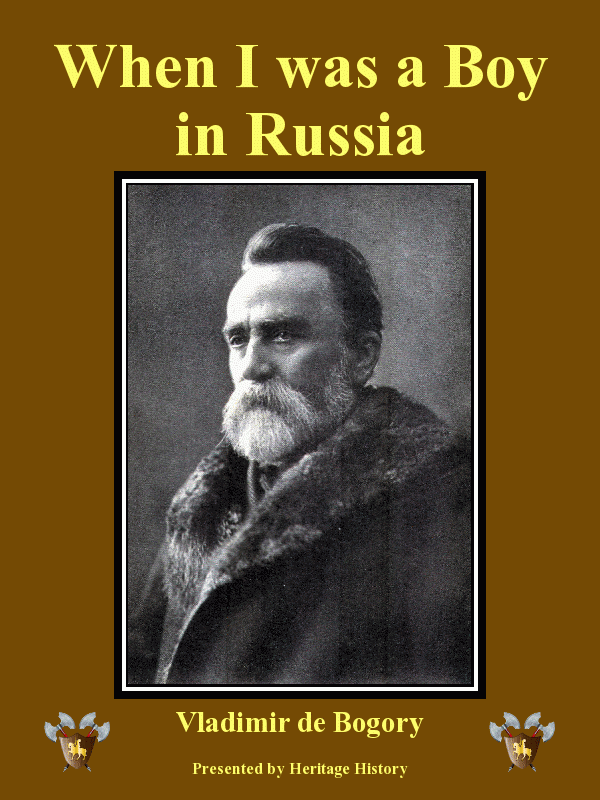 |
When I was a Boy in Russia by Vladimir de Bogory Mokrievitch
This book tells the fascinating story of how a young nobleman of great promise,
growing up in 19th century Russia, became attracted to the revolutionary ideas
popular among the upper classes of Old Russia. He tells of his involvement in
early revolutionary movements, and of his disillusionment, arrest, imprisonment
and escape to the west. This book was written shortly before the communist
takeover, so give a wonderful portrayal of pre-revolutionary Russia. It is
written at a very easy-to-read level, but very absorbing for older students
as well. [47 sheets]
|
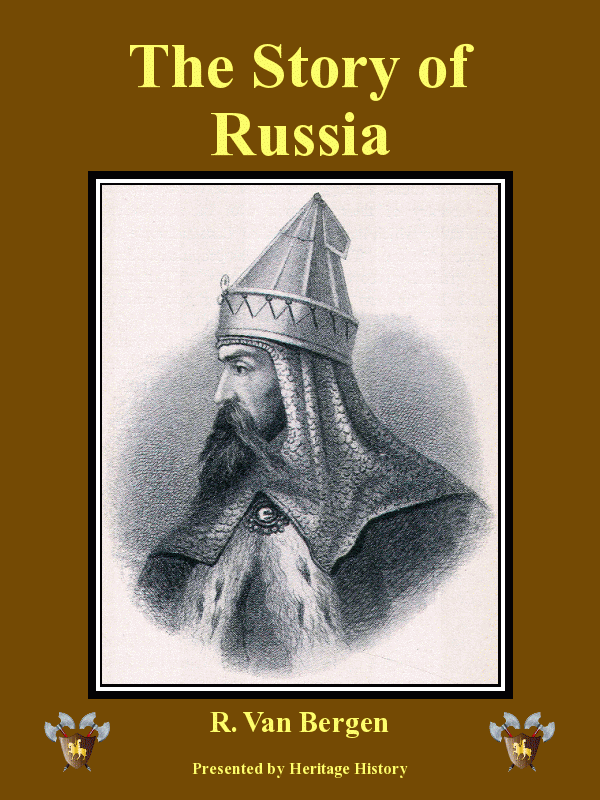 |
The Story of Russia by Robert Van Bergen
This book gives the history of the Russian Slavs from the time of Rurik the Viking
to the years immediately before the Russian Revolution.
The first half of the book tells the early history of the Slavs who inhabited
trading villages along the Volga and Don rivers, as they converted to Christianity and
formed the kingdom of Russia.
The second half focuses on modern Russia, from the age of Peter the Great
to the last of the Tsars. After Peter and his successors brought Russia into the
modern world it become a great world power, but by the end of the 19th
century, she was on the brink of revolution.
[111 sheets]
|
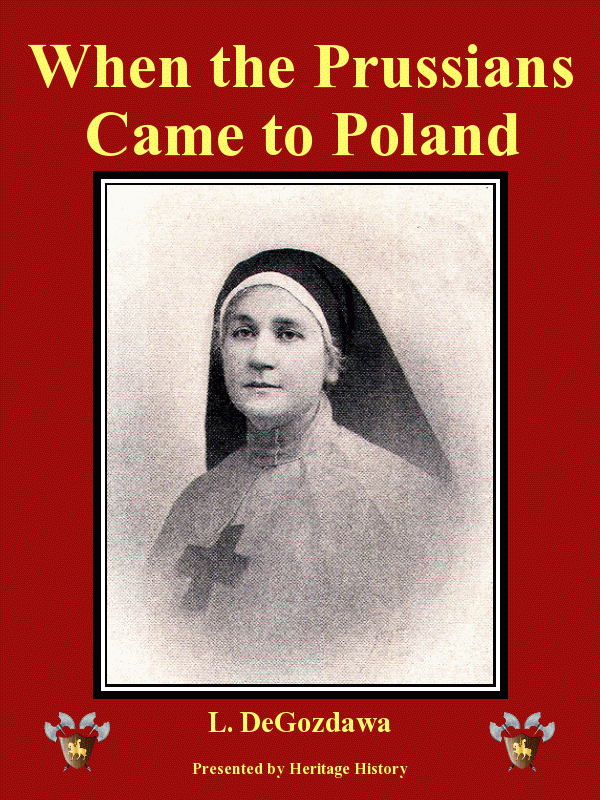 |
When the Prussians Came to Poland by Laura de Gozdawa Turczynowicz
This first person account of a American woman trapped in occupied Poland during
the early years of the First World War gives a moving and chilling account of the
atrocities perpetrated by the Prussian army. The arrogance of the Germans toward
"inferior" races was tempered by the fact that the author claimed American citizenship,
yet her sympathies were always with the oppressed Poles and Russians who were
considered an inferior breed and brutally mistreated. [88 sheets]
|
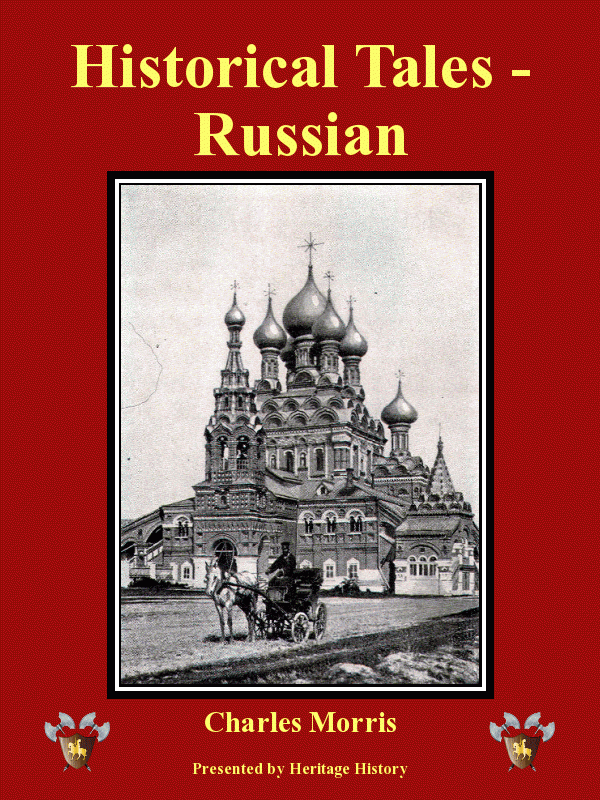 |
Historical Tales - Russian by Charles Morris
This collection of stories from Poland and Russia begin with the Scythians,
thought to be the predecessors of the Slavs, to the years immediately
preceding the Russian Revolution. The stories of the earliest governors
of Novgorod and the principality of Moscow are given, and the complete
tale of Russia's rise from obscurity to one of the most powerful empires
on the globe. [136 sheets]
|
 |
Peter the Great by Jacob Abbott
By sheer force of will, Peter the Great single-handedly imposed modernization on a
highly resistant Russia. He overcame foes from within his country, including his
sister Sophia, whom the anti-modernist forces favored for the throne. He overcame
Charles XII of Sweden, his great rival for control of the Baltic, in spite of
overwhelming defeats. He considered his son Alexis unworthy of the throne and
had him killed rather than trust his kingdom to a libertine. [106 sheets]
|
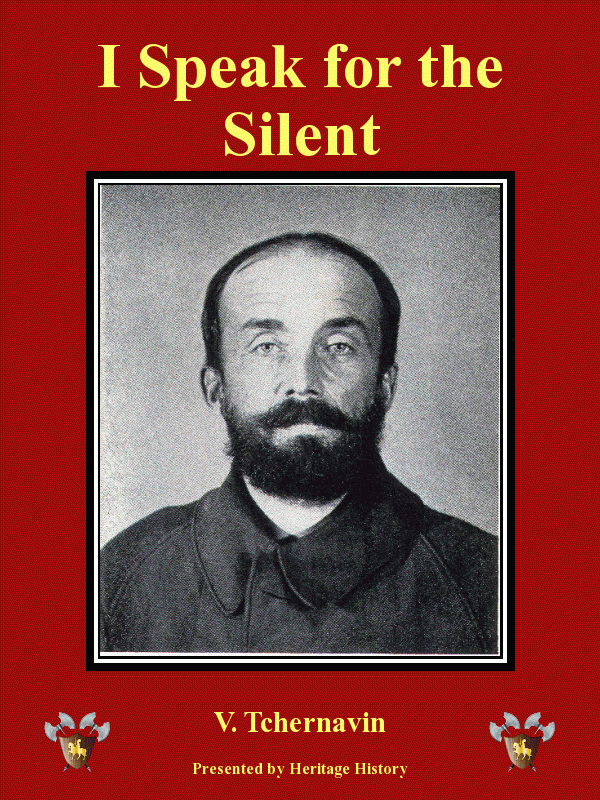 |
I Speak for the Silent Prisoners of the Soviets by Vladimir Tchernavin
This deeply moving, and frightfully truthful book about the horrors of
Soviet communism was written by one of the early victims of Stalin's
Reign of Terror. The author was a Russian scientist who escaped from
a labor-prison in Northern Russia and lived to tell the truth about
the Soviet system. His story provides a horrifying portrait of a
totalitarian state with no regard for human rights or dignity, but
it was dismissed as "anti-Soviet propaganda" by many western apologists
for socialism when it was first published in 1934. [179 sheets]
|
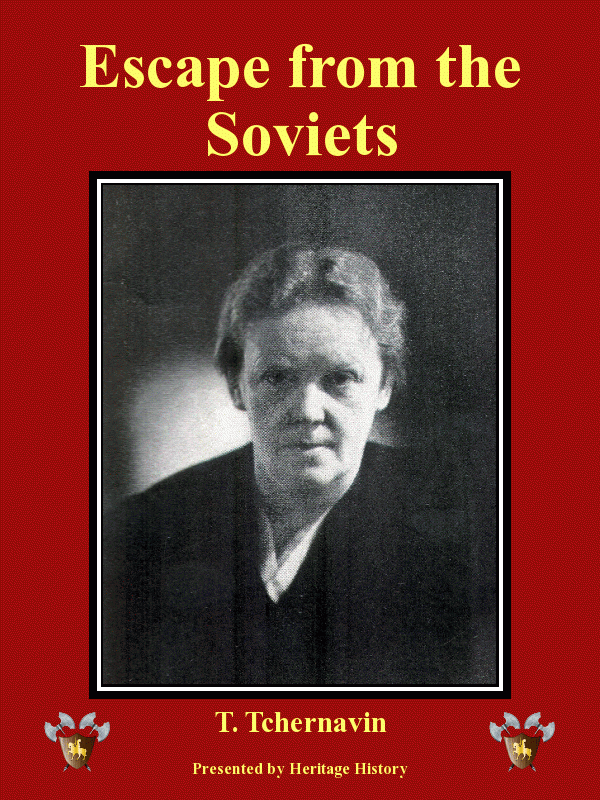 |
Escape from the Soviets by Tatiana Tchernavin
This book was written by the wife of a scientist who was imprisoned by
the Soviet government. The first part of the book tells of her ordeal
as both she and her husband are arrested, interrogated, and imprisoned,
for no apparent reason. The second part tells of her daring escape with
her husband and son from a Soviet prison camp north of the Arctic circle
through the desolate wilderness of Northern Russia. It is a deeply moving,
personal, and frightening account of a brutal, senseless, and utterly
tyrannical government. [136 sheets]
|
Overall Europe
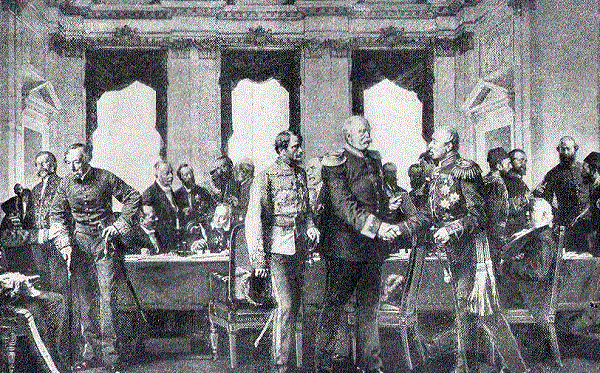
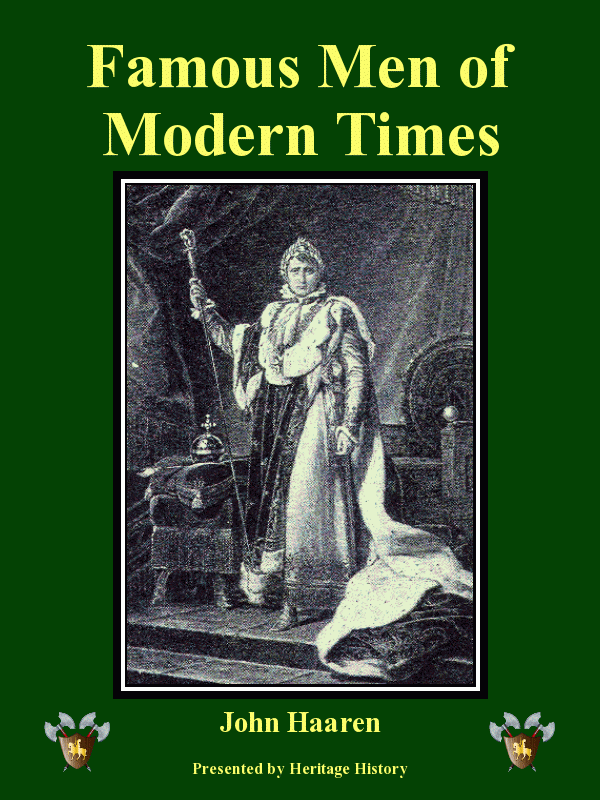 |
Famous Men of Modern Times by J.H. Haaren
Biographical sketches of thirty-three of the most famous characters from the age of the Renaissance
in Europe to the late nineteenth century. Included are well-known greats such as Charles V, Solyman the
Magnificent, Drake, Raleigh, Richelieu, Louis XIV, Newton, Peter the Great, Washington, Pitt, and Napoleon
as well as many others. [119 sheets]
|
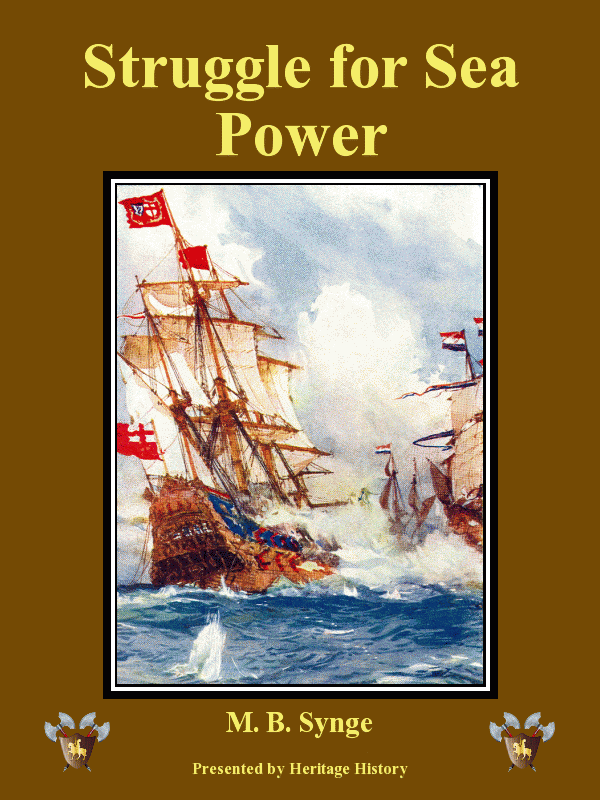 |
Struggle for Sea Power by M.B. Synge
Book IV of the Story of the World series. Focuses on the age of empire and world colonization.
The histories of European colonies in America, Australia, South Africa, and India are related.
Also covered are the Revolution in America, the French Revolution, and campaigns of Napoleon.
[93 sheets]
|
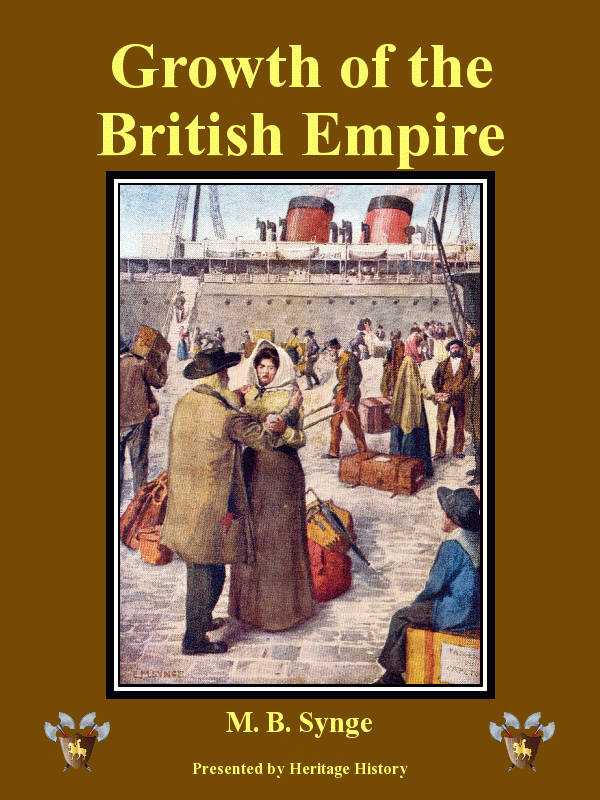 |
Growth of the British Empire by M.B. Synge
Book V of the Story of the World Series. Treats the revolutions in South America and Mexico, the
Boer War in South Africa, and the exploration of Central Africa, the Greek and Italian wars for
independence, the Crimean War, the American Civil War, the opening of trade with Japan and China,
and the rebellion in India. [94 sheets]
|
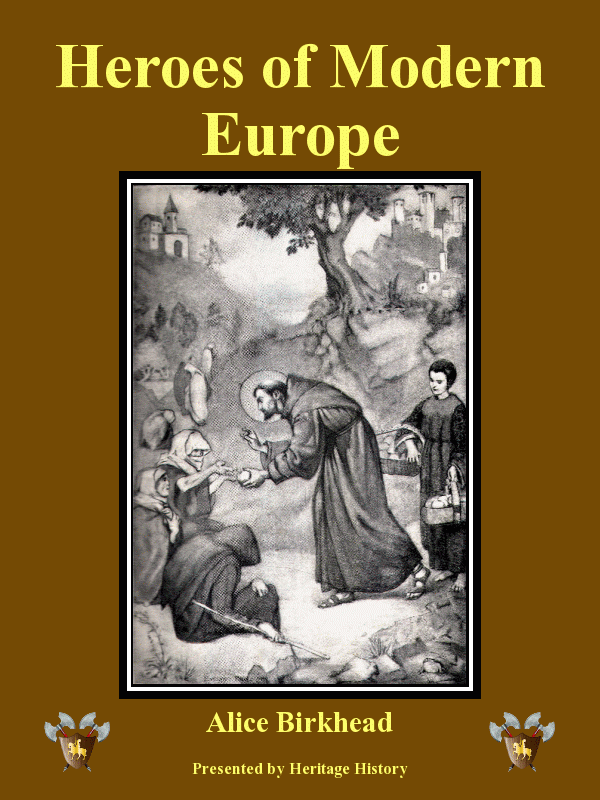 |
Heroes of Modern Europe by Alice Birkhead
The author recounts the lives of two dozen of the most prominent men of Europe with special emphasis
on their role in the conflict between the Church and state. The lives of Dante, Luther, Charles V,
Henry of Navarre, Peter the Great, Voltaire, Frederick the Great, Napoleon and Garibaldi are given
along with other, from a generally progressive point of view. [102 sheets]
|
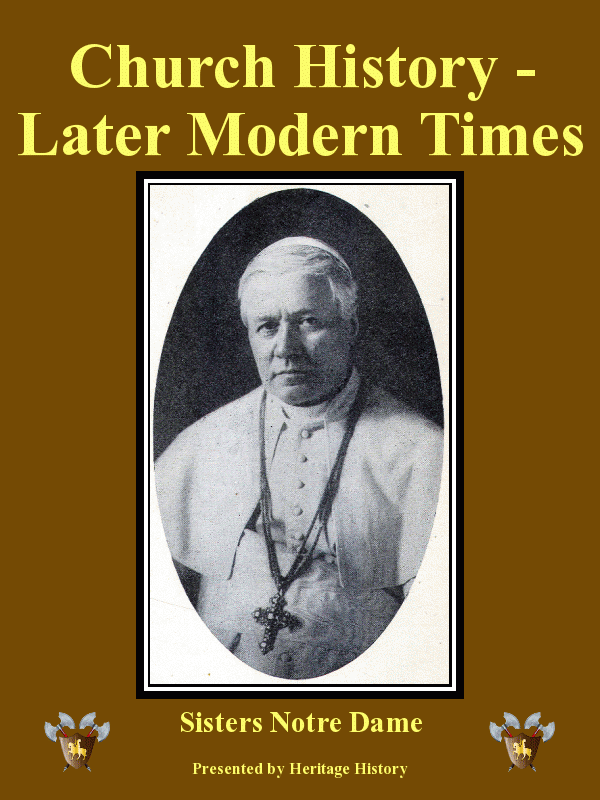 |
Church History: Later Modern Times by Sister Notre Dame
This fifth book of a five volume Church History covers the 18th and 19th centuries, and covers the trials
of the church in the modern age. The rise of statist governments, who seek control of church property
and influence, even while adhering to nominal Christianity was the challenge of the post-enlightenment age.
These centuries saw both triumph and disaster for the universal church, and the rise of a number of notable
popes. [62 sheets]
|
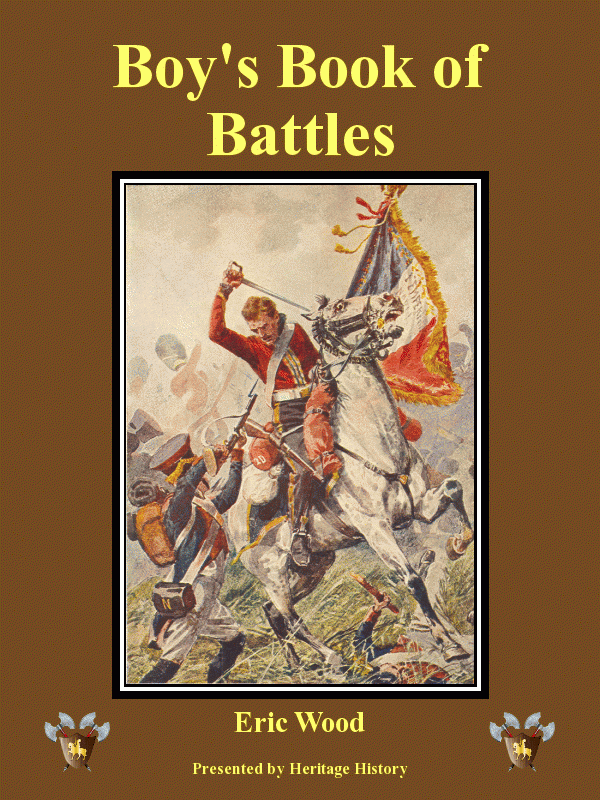 |
Boy's Book of Battles by Eric Wood
This book focuses on the military exploits of dozens of the most important
battles in world history. Although a brief overview of the political issues
involved is usually given , the main focus is on the daring deeds, strategies,
and exploits of the battles themselves. Many critical battles from world history
are given, including Marathon, Tours, Agincourt, and the Armada, but the book
also strongly emphasizes 19th century battles, including Waterloo, Trafalgar,
Balaclava, Palermo, Gettysburg, and Koniggratz. [151 sheets]
|
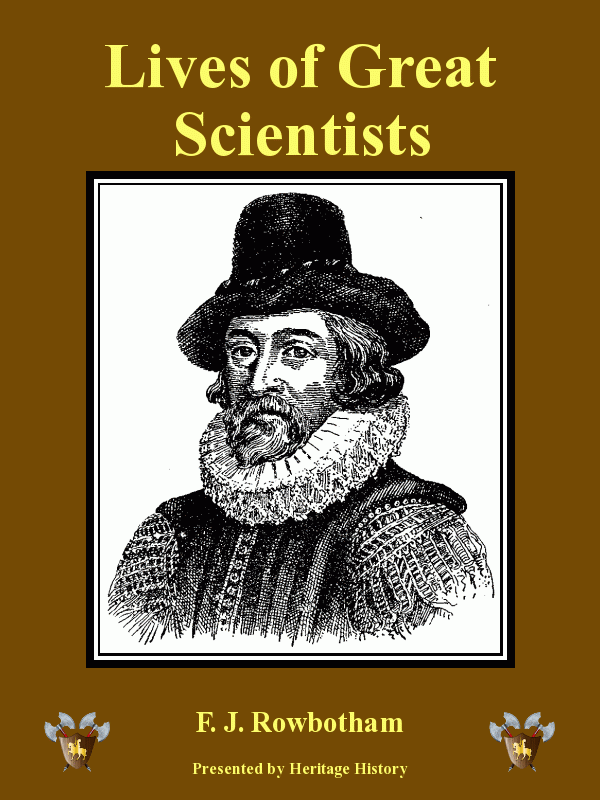 |
Story Lives of the Great Scientists by F. J. Rowbotham
The life stories of sixteen of the world's most famous scientists are
given, beginning with Francis Bacon, and ending with Madame Curie.
Other scientist biographies include Galileo, Isaac Newton, Humphrey
Davy, Michael Faraday, Charles Darwin, Louis Pasteur, Lord Kelvin,
Lord Lister, and several others. [98 sheets]
|
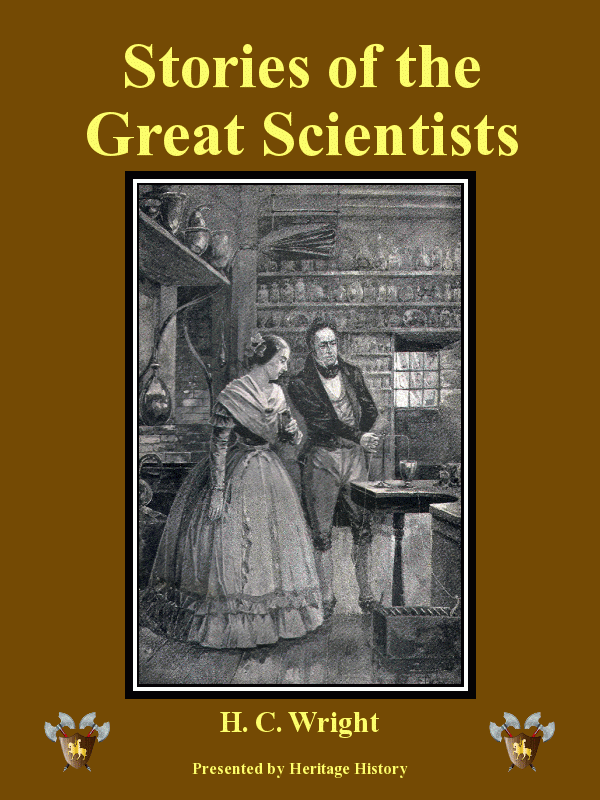 |
Children's Stories of the Great Scientists by Henrietta Wright
This book contains sixteen stories of some of the most important
scientists in history, focusing mainly on the 18th and 19th
centuries. The life stories of the scientists are given along
with an explanation of the significance of their contributions.
Featured scientists include Galileo, Kepler, Linnaeus, Rumford,
Davy, Faraday, Lyell, Tyndall and Darwin. [98 sheets]
|
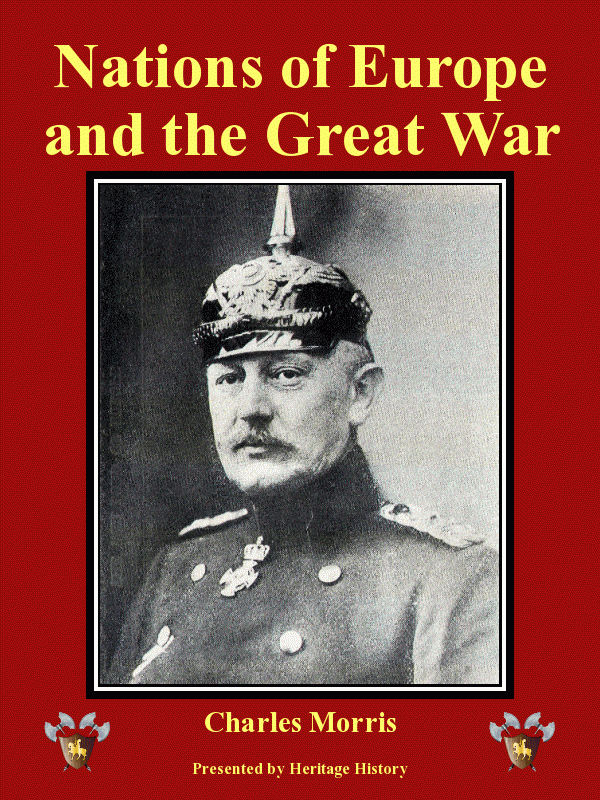 |
Nations of Europe and the Great War by Charles Morris
This book covers all the major developments of 19th century European
history with the intention of explaining how international conflicts set
the stage for the Great European War of 1914-1918. Beginning with the
Napoleonic wars of the early 1800's and ending with the Balkan wars of the
early 1900's, the books covers all major developments in international
relations of Europe with a particular emphasis on England, Prussia, and
France. The final chapters are dedicated to a description of how the
continent fell into war and how modern methods of warfare have dramatically
changed the course of current conflicts. [230 sheets]
|
Great War
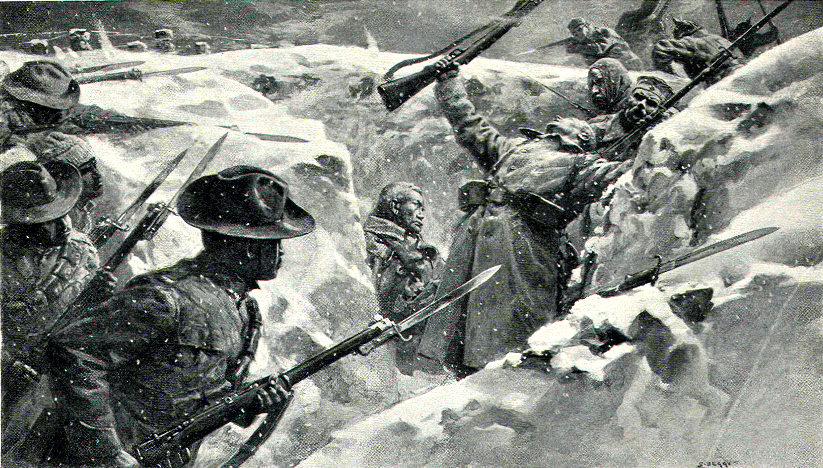
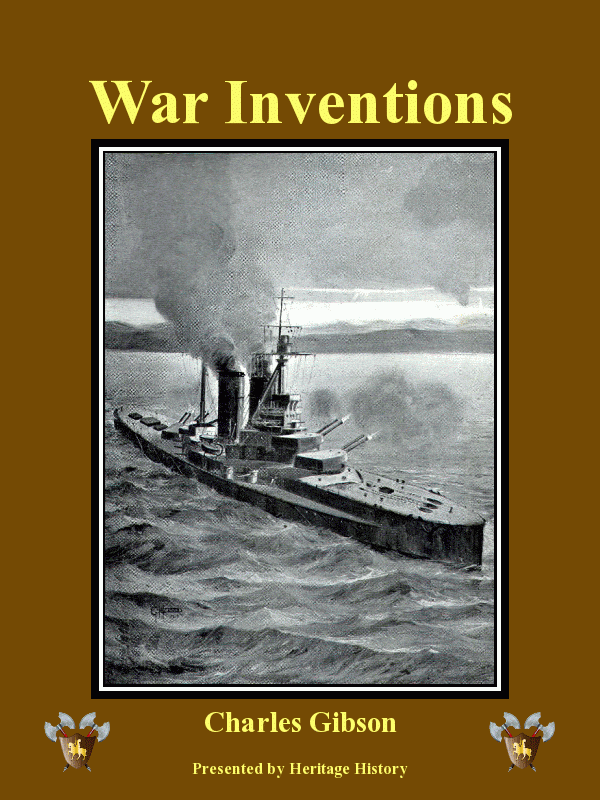 |
War Inventions and How they were Invented by Charles Gibson
The author of this book is a talented science writer for children who
is able to explain important scientific phenomena in easy to understand
language. In this book he explains the evolution of guns, and explosives;
the technology associated with battle ships, submarines, torpedoes and
mines; various surveying instruments, and finally fighter aircraft. Although
students of all ages are spellbound by these fascinating technical histories,
the book is a favorite of middle school age boys in particular.
[135 sheets]
|
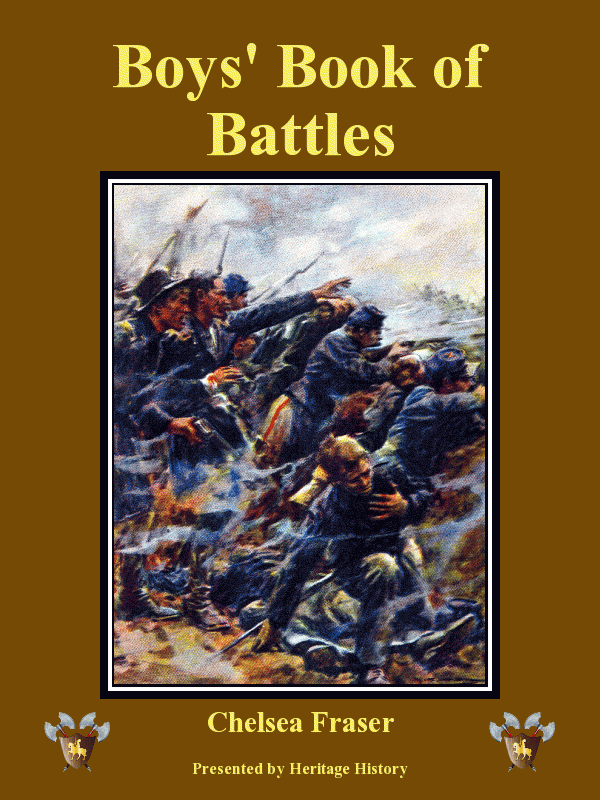 |
Boys' Book of Battles by Chelsea Fraser
Eleven of the most important battles in American and European History are brought to life in this volume,
which spends enough time giving interesting background and detailed information, to give each battle vital
and lively interest. Particularly moving are three eye-witness accounts of the horrors of the Great War at
Verdun, Ypres, and Argonne. Other battles recounted include Saratoga, Yorktown, and Gettysburg in America,
and Sedan, Austerlitz, and Waterloo in Europe. [140 sheets]
|
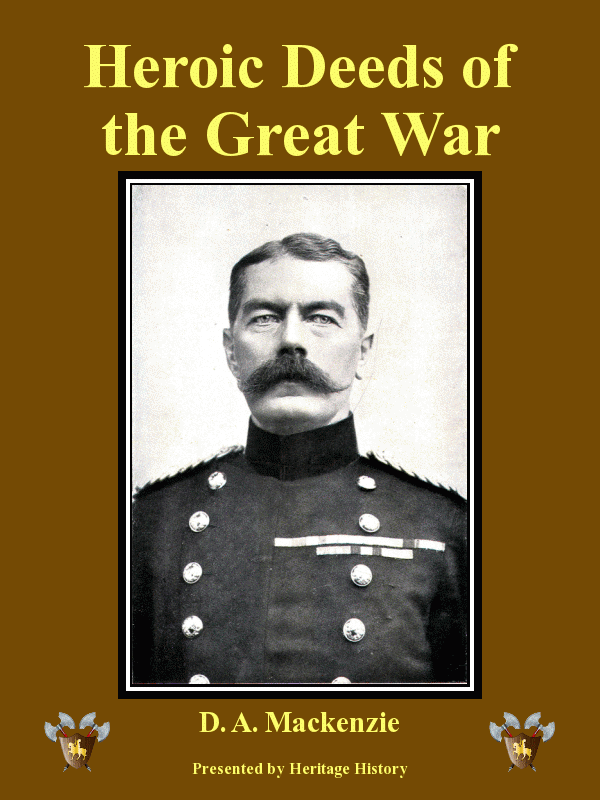 |
Heroes and Heroic Deeds of the Great War by Donald Mackenzie
This book does not provide an overview of the Great War, but instead focuses on individual heroes and
heroic events that occurred during the war. It provide brief biographies of only a few of WWI leaders, including
Kitchener, Joffre, and Jellico, but for the most part tells stories and anecdotes of personal
interest. It was published in the year that the Great War came to a close so it tells the stories of the
war with an immediate, rather than a reflective passion. [67 sheets]
|
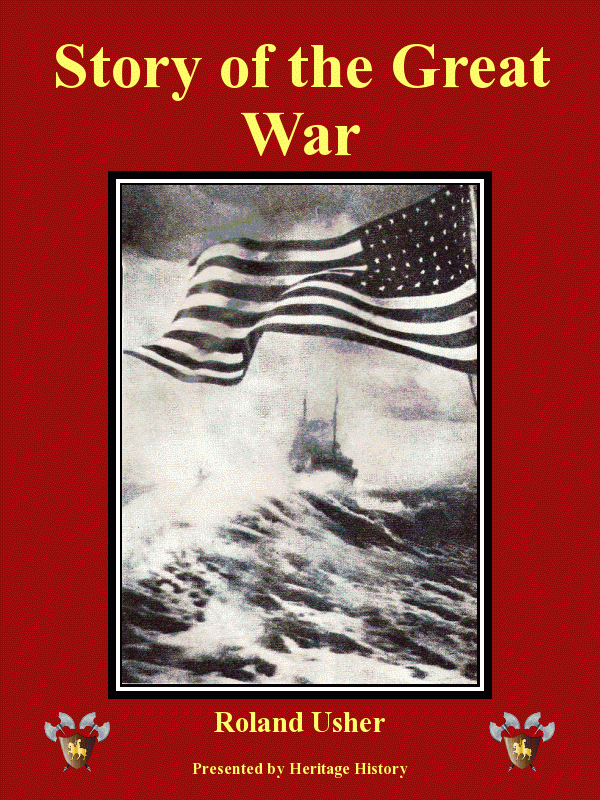 |
Story of the Great War by Roland Usher
This book is written for the general reader and gives a very complete overview of the
Great War It briefly explains the causes and sentiments of the war, along with a comprehensive
overview of the battle strategies. The author observes that the vast scale of the war,
and the fact that simultaneous battles occurred on various fronts makes a full comprehension
of the war difficult, but then proceeds to provide an engaging, but thorough review.
[144 sheets]
|
The number of sheets listed indicates the number of 8½ by 11 sheets of paper required to print the
entire book, single-sided. Double-sided printing would allow publishing the entire book using only half the
given number.
Copyright © Heritage History 2012
All rights reserved
|











